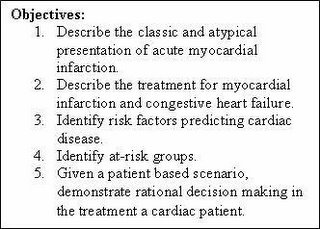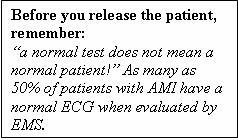
Part One: LOCATE the Patient
This is the first installment of a three-part series on patient asse3ssment. Part one will introduce LOCATE system as a guide to help the EMS provider on assessing the patient, the scene, and as a decision making aid. Part two will discuss the not-so-obvious details of physical exam finding, and in part three; we’ll discuss assessment aids such as the Cincinnati Stroke Scale, Pediatric Assessment Triangle, and trauma triage schemes.
It seems simple enough; before you can provide treatment and transportation you have to find the person in need of your service. Actually finding the patient is only part of the job. Providers of emergency medical service (EMS) at all levels must prepare themselves prior to reaching the scene or patient for a variety of potential actions and outcomes. Waiting to arrive on-scene to develop a care plan or mental review of the potential scenarios places both provider and patient at a disadvantage. The fire services use the process of pre-incident planning and size-up to prepare firefighters for potential needs or dangers of any given situation. Pre-incident planning can be used to anticipate additional resources and special needs of a situation. Emergency medical services can and should do the same.
EMS and fire service text are filled with acronyms that have become part of daily conversation. Acronyms are memory aids that range from the simple ABCDE’s that remind us of the basics of patient assessment to SLUDGE as a memory jog for organo-phosphate exposure symptoms. In this installment we will introduce the acronym LOCATE as a means of assessing not only the patient, but the scene and patient needs as a whole.
Location. In the real estate business location is everything and so it is for EMS. What do we as EMS providers need to know about the location we are responding to in order to accomplish our goals and objectives? What can we tell about a situation before we enter the environment? Let’s consider the following questions:
What type of occupancy are we at?
How well do you know your response district?
What geographical special needs or special hazards have to be considered?
Respocnes to group homes, rehabilitation centers, and senior living centers demand special attention by the responder. The structure itself can yield important clues as to the special needs of those inside and impact your options. Calls to medical facilities and clinics add yet another dimension to your response such as dealing with medical professionals and therapy-in-progress. The key to situational assessment is to anticipate, not stereotype.
Obstacles such as ramps, lifts and the presence of customized vehicles should prepare you for the special needs of the person inside the location and warn you about special hazards of getting in and out with all your equipment (including your lumbar spine) safe and intact. Commercial buildings and public places offer some challenges that are not as obvious. Small elevators may prevent your crew from arriving or returning together. Who will stay with the patient and what vital equipment will you keep with you? In public places on-lookers can become an obstacle. Patient dignity and privacy in the public venue must be addressed differently than in a private residence in effort to preserve the comfort and cooperation of the patient during treatment. The responder must also consider the presence of security video surveillance, camera phones, and other digital recorders. Responders must anticipate that a majority of the public owns some type of digital recording device and consider the impact these devices may have on privacy and care.
Conditions such as post medical conditions are a routine part of EMS assessment. Now consider the living conditions you find the patient in. By being observant to living conditions; EMS providers have a unique opportunity not available to others in the health care system. Situational awareness can yield important clues that must be relayed and addressed by the health care system. The GEMS diamond used in Geriatric Education for Emergency Medical Services is a good example. The EMS provider must again ask themselves a number of questions:
Are the patient, the family, and the care givers able to carry our daily activities?
Has there been a change in how the patient cares for themselves? If so, is the cause of the change medical in nature, such as in the setting of CVA/TIA, or social a aspect such as the loss of a spouse or other supporting person?
Family support or lack thereof plays an important role in every situation. The EMS provider must not only find medications but assess if the patient is physically and mentally able to take them.
The presence or absence of Accessories is closely related to conditions and considers physical items.
Is the patient using the cane or walker? If not, is lack of use or lack of the device a cause of falls and injuries?
Has the patients’ ability to use such a device changed and are they no longer able to use their accessories?
Other accessories that should be assessed include home oxygen units, air-powered nebulizers, ventilators, hospital beds and lifts, commodes, and orthopedic devices. The presence of basic medical supplies can also indicate the level of care a person should receive on a daily basis. The presence of many other medical accessories may also indicate the need for another and arguably more important need; and educated caregiver in the home. There is no substitute for the love and compassion provided by a family in the home-care situation. EMS providers must harness the educated family or caregiver as a precious piece of the assessment puzzle. Failure to do so can result in the loss of valuable information, inaccurate diagnosis and treatment, and poor public relations.
Treatment is what you do for the patient. Your assessment should lead to a working diagnosis list and guide your treatment. Treatment provided by previous EMS responses and discharge paperwork from previous emergency department visits is also important. We all have a list of frequent users of our services but, do we communicate what we’ve done to help these people? We shouldn’t have to reinvent treatment each time we see a previously treated patient. Multiple requests for “lift assists” for example, may indicate subtle changes in patient condition or change in social status indicating the need for augmented services. The key is to anticipate, not stereotype.
Evaluate the need for Education and Extra help. The EMS provider has the ability to see the patient in their surroundings as they are every day. EMS should also be knowledgeable of patient education topics pertaining to safety and well-being, social programs, and signs of abuse. Consider the following questions:
Are you aware of the signs of elder, child, or domestic abuse? If so, what are your reporting requirements?
Are you aware of the community programs that may be of benefit to those in crisis?
Being able to provide information on social programs and domestic support are vital for the EMS provider.
Evaluation must begin prior to response. Weather conditions and time of day must also play a role here. Other events; natural disasters and intentional events locally, nationally, and internationally must also be taken into account. It is here that you have the opportunity to help any member of the public prepare for crisis…even those that are not medically related.
Summary
The ability to assess the scene and the patient before you arrive is a skill learned with experience. The acronym LOCATE is:
Location
Obstacles
Conditions
Accessories
Treatment
Evaluate, Educate, Extra help
Use LOCATE to guide your patient care plans on-route, on-scene, and after care to build your assessment of the patient as whole. Pre-planning and size-up are important aspects of patient care; if you LOCATE each patient you will be better able to keep these points and patient care in focus.

